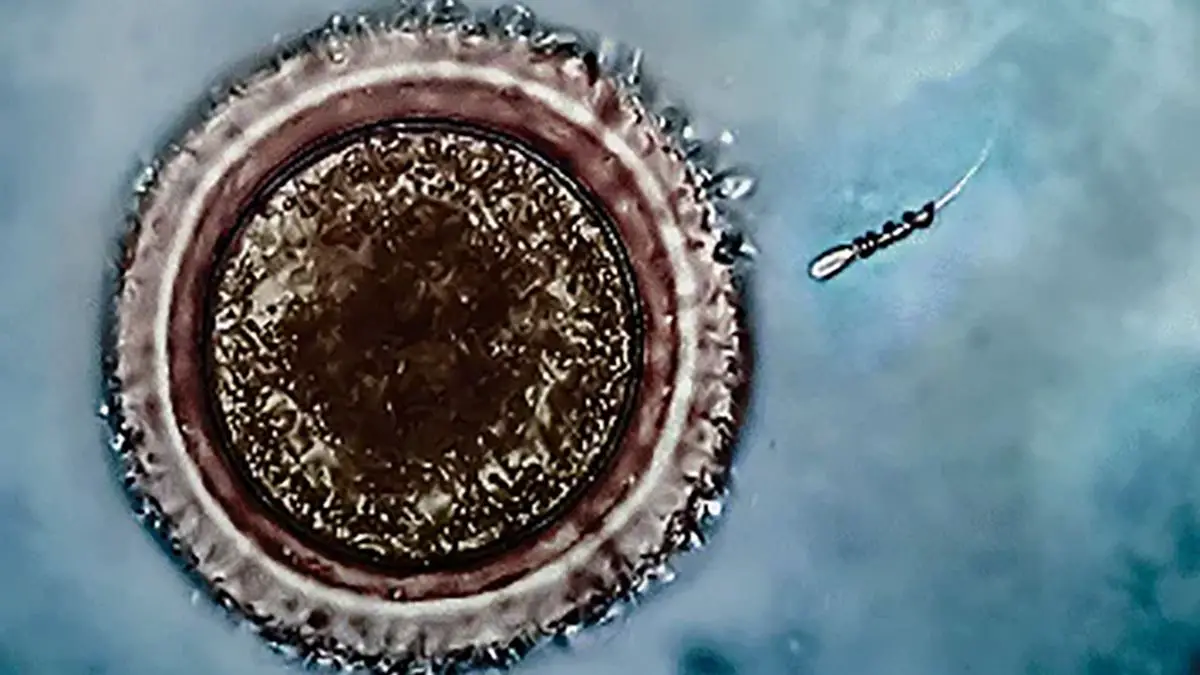Declare: A video filmed on the microscopic stage exhibits a nanobot because it “picks up a lazy sperm by the tail and inseminates an egg with it.” Ranking: About this ranking True Context The video in query was revealed in a 2016 problem of the peer-reviewed scientific journal Nano Letters, and confirmed a so-called “spermbot” propelling immotile sperm towards an egg cycle in a petri dish, or in vitro, and never in an precise dwelling organism. Researchers wrote on the time that the expertise has potential however requires extra analysis earlier than it may be utilized in medical procedures.
Origin
A black-and-white video shared to social media confirmed a microscopic, corkscrew-shaped helix because it appeared to eat a sperm cell, transport it, and ultimately drive the little swimmer into the wall of an immature egg cell, or oocyte.
The video was broadly circulated after it was shared to Twitter by the account Bizarre Science on Sept. 21, 2021, during which the claimed the video confirmed a nanobot because it “picks up a lazy sperm by the tail and inseminates an egg with it.” The video was additionally posted to Reddit shortly after, the place it garnered 125,000 upvotes.
A glance via the scientific literature revealed that sure, the video in query is actual. However there are just a few caveats to notice, specifically that that is the second spherical of consideration it has garnered on social media.
The assisted swimmer video initially made headlines when it was first revealed in a 2016 problem of the peer-reviewed journal Nano Letters, a publication by the American Chemical Society. The so-called “spermbot” was developed by researchers on the German Institute for Integrative Nanosciences in an effort to seek out new approaches to addressing infertility.
Let’s be clear: The expertise is a prototype that was recorded propelling immotile sperm towards an oocyte in a petri dish, or in vitro, and never in a dwelling organism. Latin for “inside the glass,” in vitro research are carried out utilizing organic cells and molecules outdoors of a dwelling organism. (In vivo, alternatively, interprets to “inside the dwelling” and refers to work inside an organism.)
The principle explanation for infertility is low sperm motility or sperm which can be in any other case wholesome however can’t swim. Cue the spermbot, designed as an alternative choice to different infertility remedies like synthetic insemination and in vitro fertilization. The nanobot consists of a metallic helix massive sufficient to wrap across the sperm and makes use of a rotating magnetic area to latch on to the tail of sperm to “drive” it into an egg for potential fertilization.
Micromotors just like the spermbot are impressed by their pure counterparts and mimic pure processes with the assistance of human-powered help, like magnetic fields. However regardless of their promise, the precision of supply, and biocompatibility, the compatibility of nonorganic materials with dwelling tissue, stay challenges within the human physique.
The hybrid micromotor makes use of a spermatozoon as an “onboard energy provide” and matched with the microtube that was remote-controlled by an exterior magnetic area, the sperm tail nonetheless supplies propulsion for “mobile cargo supply.” In brief, these “personalized microhelics” function motors that may transport sperm cells which have movement deficiencies.
“Our outcomes point out that metal-coated polymer microhelics are appropriate for this activity resulting from potent, controllable, and nonharmful 3D movement habits,” wrote the examine authors. “We handle to seize, transport, and launch single immotile stay sperm cells in fluidic channels that enable mimicking physiological situations.”
Profitable seize, as seen within the video, exhibits the tail being confined contained in the inside a part of the microhelix, head stands proud on the entrance finish and is loosely sure by a hoop that “acts like a noose to stop the sperm head from slipping again via the helix.
Limitations within the expertise arose when evaluating totally different sperm and egg cells, every of which should be transferred from tradition dishes to a different platform for testing that prompted delays and temperature fluctuations — each elements that may affect success charges. Nonetheless, the authors say their work serves to display a brand new method to synthetic copy sooner or later.
“Sadly, just like many promising purposes in biomedical engineering, it seems to be nonetheless a good distance from artificially motorized sperm supply to precise oocyte fertilization,” wrote the researchers, including that the success of this novel method lies in its potential.
Testing in petri dishes was a “promising begin” that would someday result in a remedy for male infertility, however required extra analysis earlier than it might be utilized to people, the researchers concluded.
“Even supposing there nonetheless stay some challenges on the way in which to attain profitable fertilization with artificially motorized sperms, we imagine that the potential of this novel method towards assisted copy might be already put into perspective with the current work,” wrote the examine authors.
Snopes contacted the researchers to study extra concerning the present standing of the expertise, and whether or not it could be match for human testing however didn’t hear again in time for publication. We are going to replace the article accordingly.
